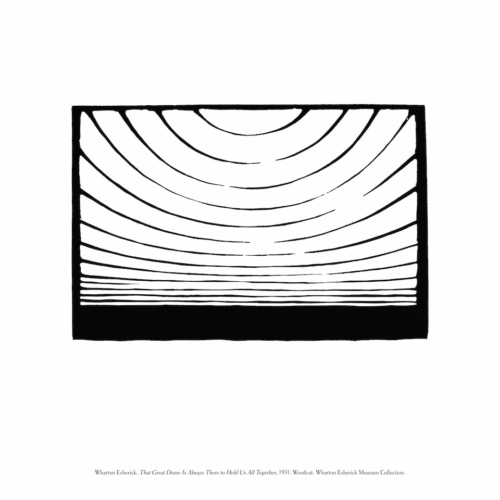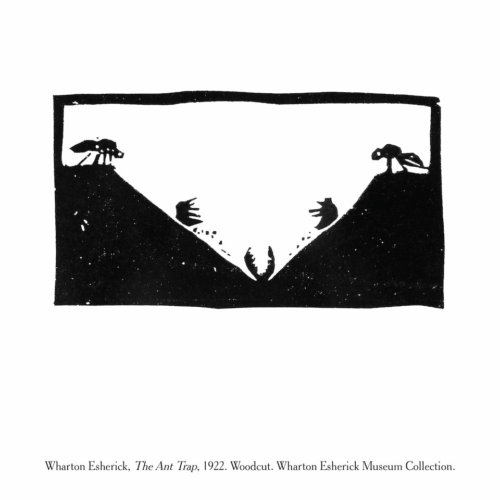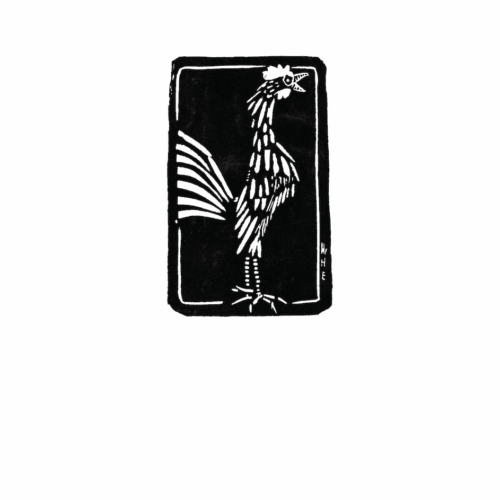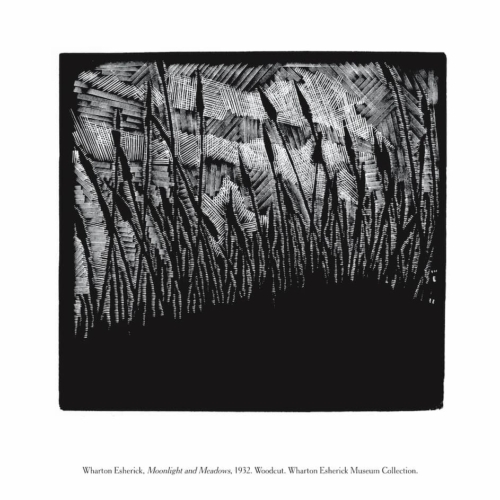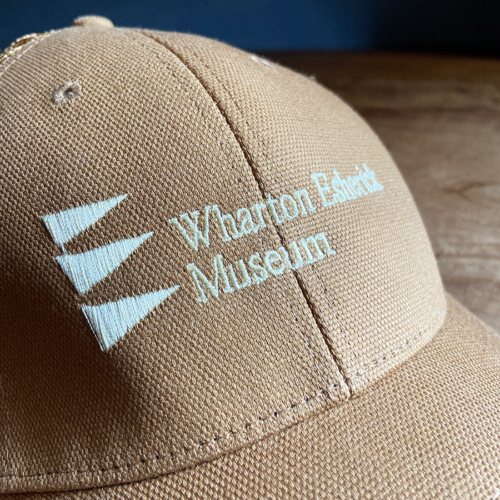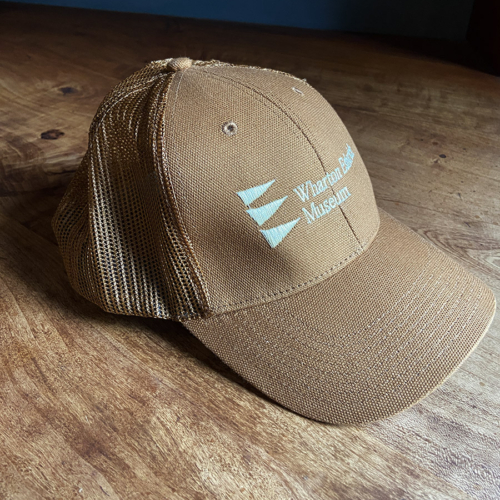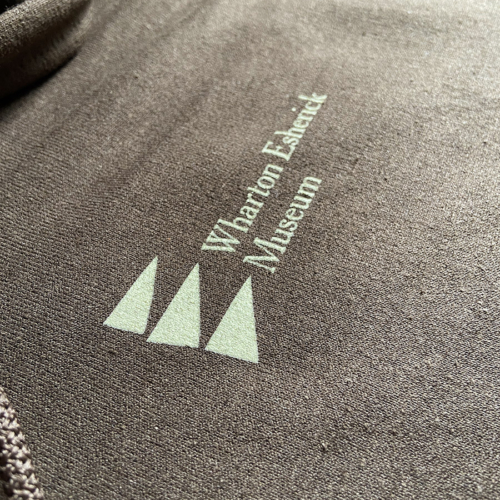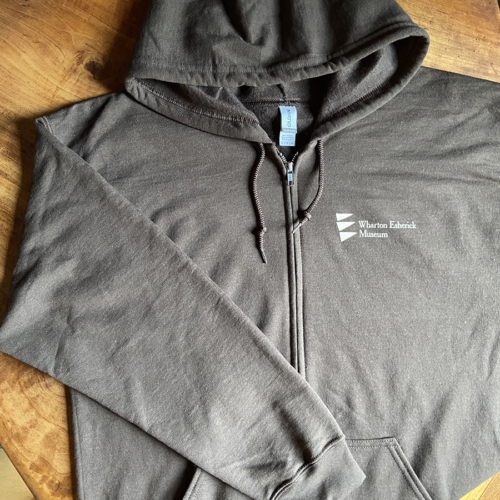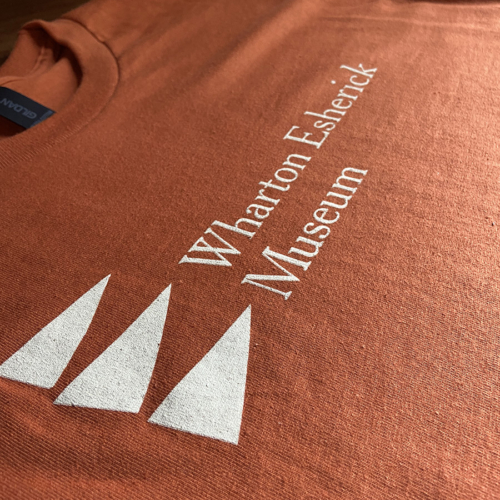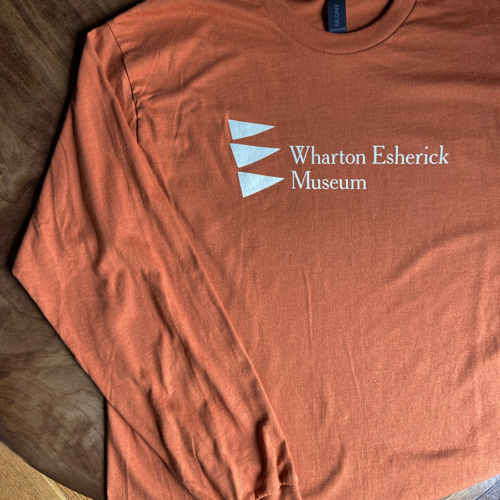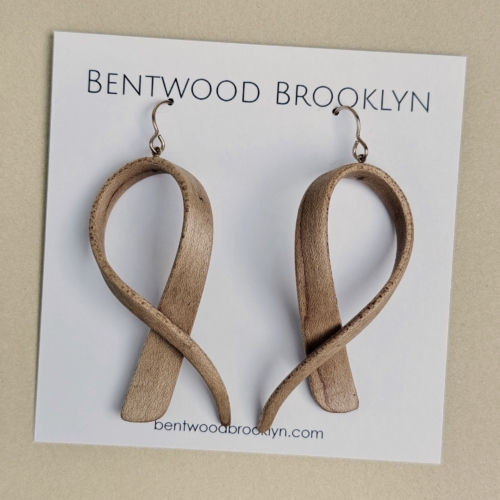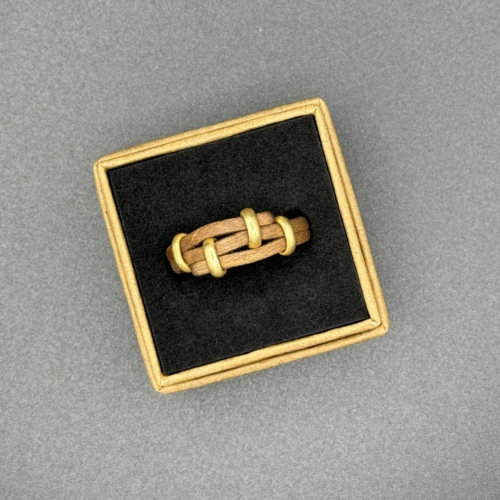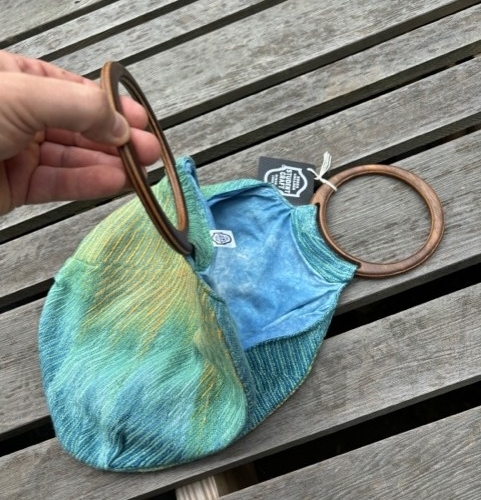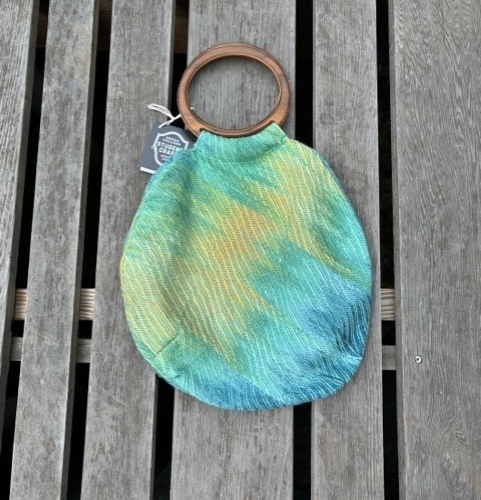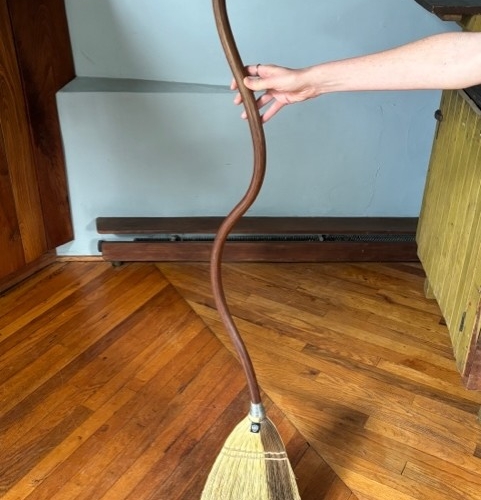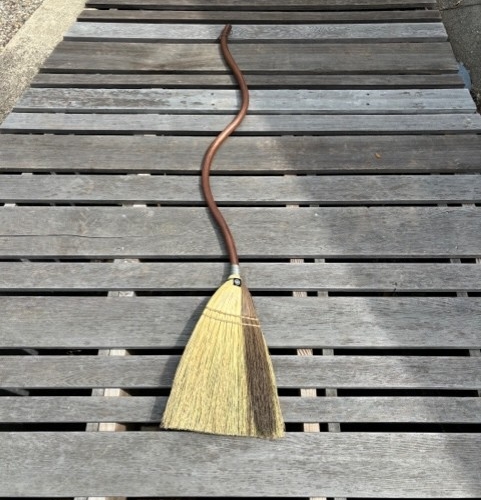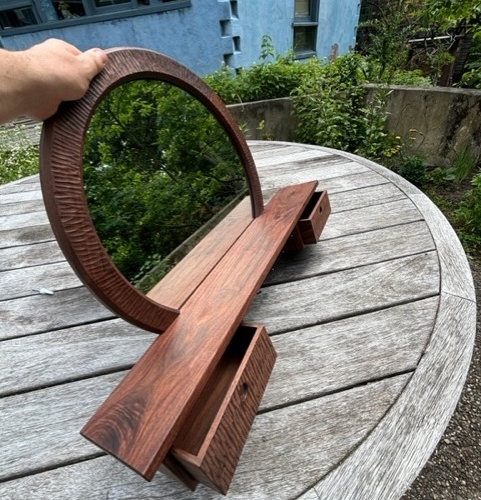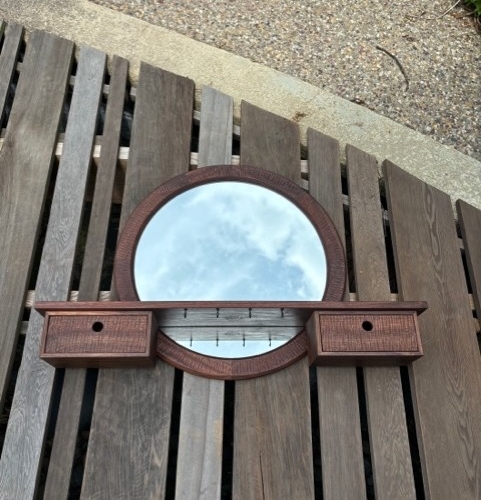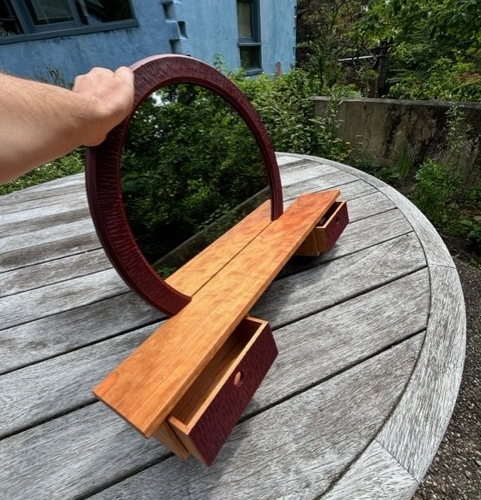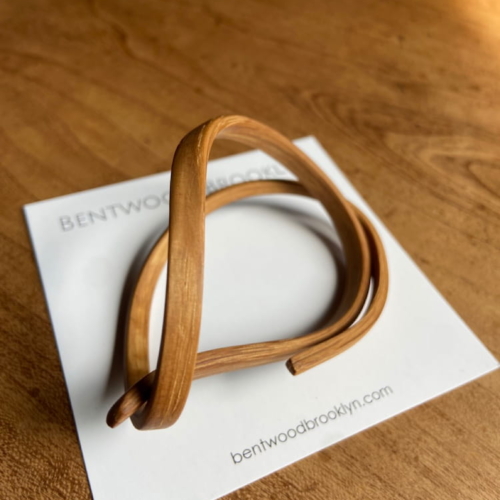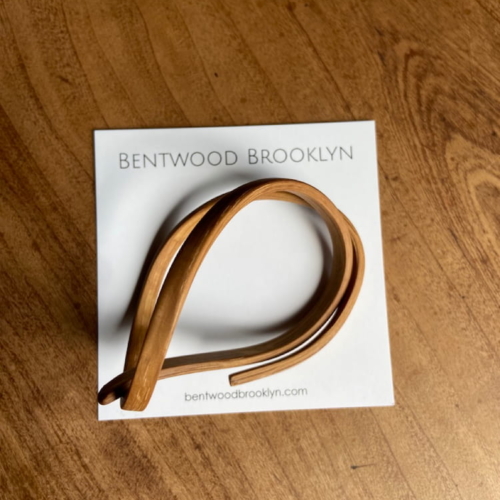-
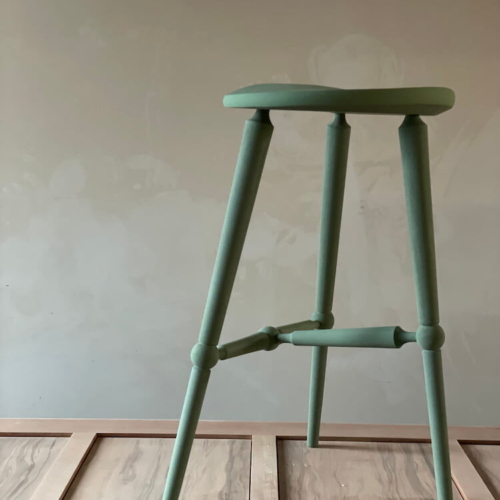
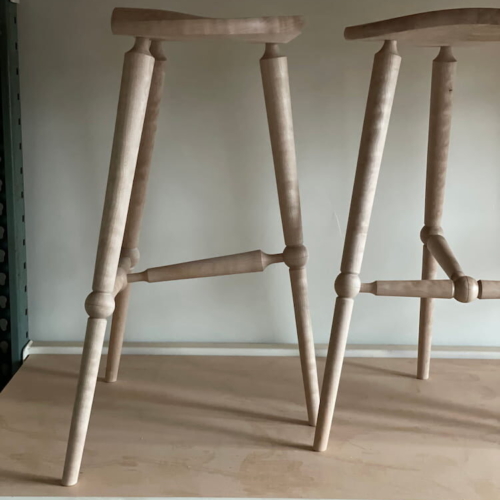 Matthew Giossi & Ronald Kuhn Tripod Stool, 2024 Painted poplar, blister maple Dimensions Variable This artwork is featured in Renewal: WEM's 31st Annual Juried Woodworking Exhibition on view through September 7, 2025. The twenty-five artists featured in this exhibition each approach renewal from a unique perspective, yet they share an interest in exploring its many manifestations through wood, whether focusing on its material properties, historical resonance, inherent narratives, or metaphorical potential. *Shipping of artworks from the Juried Woodworking Exhibition will be arranged by the artist. Please enter the coupon code juried31 at checkout to receive free shipping on these items. *Member discount cannot be applied to artworks in the Juried Woodworking Exhibition.
Matthew Giossi & Ronald Kuhn Tripod Stool, 2024 Painted poplar, blister maple Dimensions Variable This artwork is featured in Renewal: WEM's 31st Annual Juried Woodworking Exhibition on view through September 7, 2025. The twenty-five artists featured in this exhibition each approach renewal from a unique perspective, yet they share an interest in exploring its many manifestations through wood, whether focusing on its material properties, historical resonance, inherent narratives, or metaphorical potential. *Shipping of artworks from the Juried Woodworking Exhibition will be arranged by the artist. Please enter the coupon code juried31 at checkout to receive free shipping on these items. *Member discount cannot be applied to artworks in the Juried Woodworking Exhibition. -

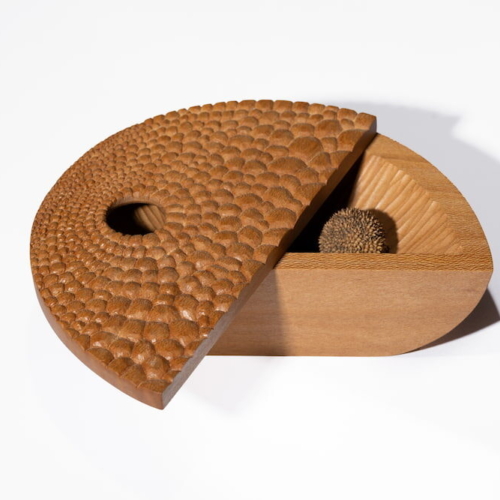 Talia Drury Sycamore I: Achenes, 2024 Sycamore 7 x 4 1/8 x 2 1/2 inches This artwork is featured in Renewal: WEM's 31st Annual Juried Woodworking Exhibition on view through September 7, 2025. The twenty-five artists featured in this exhibition each approach renewal from a unique perspective, yet they share an interest in exploring its many manifestations through wood, whether focusing on its material properties, historical resonance, inherent narratives, or metaphorical potential. *Shipping of artworks from the Juried Woodworking Exhibition will be arranged by the artist. Please enter the coupon code juried31 at checkout to receive free shipping on these items. *Member discount cannot be applied to artworks in the Juried Woodworking Exhibition.
Talia Drury Sycamore I: Achenes, 2024 Sycamore 7 x 4 1/8 x 2 1/2 inches This artwork is featured in Renewal: WEM's 31st Annual Juried Woodworking Exhibition on view through September 7, 2025. The twenty-five artists featured in this exhibition each approach renewal from a unique perspective, yet they share an interest in exploring its many manifestations through wood, whether focusing on its material properties, historical resonance, inherent narratives, or metaphorical potential. *Shipping of artworks from the Juried Woodworking Exhibition will be arranged by the artist. Please enter the coupon code juried31 at checkout to receive free shipping on these items. *Member discount cannot be applied to artworks in the Juried Woodworking Exhibition. -


Bruce Colburn
Plastic Cherry Blossoms, 2023
Sycamore branches, milk top pull rings
75 x 38 x 27 inches
This artwork is featured in Renewal: WEM's 31st Annual Juried Woodworking Exhibition on view through September 7, 2025.
The twenty-five artists featured in this exhibition each approach renewal from a unique perspective, yet they share an interest in exploring its many manifestations through wood, whether focusing on its material properties, historical resonance, inherent narratives, or metaphorical potential.
*Shipping of artworks from the Juried Woodworking Exhibition will be arranged by the artist. Please enter the coupon code juried31 at checkout to receive free shipping on these items.
*Member discount cannot be applied to artworks in the Juried Woodworking Exhibition.
-
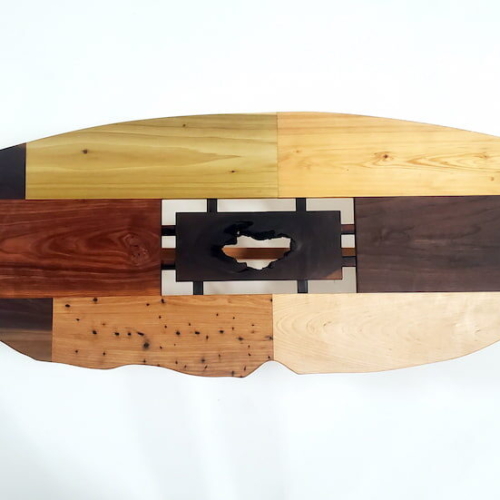

Wednesday Childs
Remnants of Impalement, 2023
Reclaimed hemlock and white oak and scraps of walnut, poplar, maple, ash, cherry, and ebony, finished with linseed oil
57 1/2 x 19 1/2 x 18 1/2 inches
This artwork is featured in Renewal: WEM's 31st Annual Juried Woodworking Exhibition on view through September 7, 2025.
The twenty-five artists featured in this exhibition each approach renewal from a unique perspective, yet they share an interest in exploring its many manifestations through wood, whether focusing on its material properties, historical resonance, inherent narratives, or metaphorical potential.
*Shipping of artworks from the Juried Woodworking Exhibition will be arranged by the artist. Please enter the coupon code juried31 at checkout to receive free shipping on these items.
*Member discount cannot be applied to artworks in the Juried Woodworking Exhibition.
-
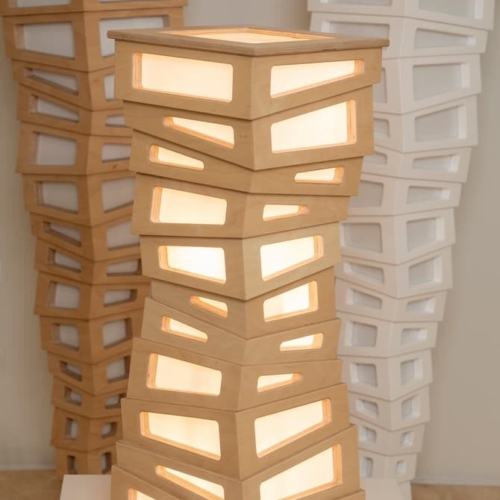
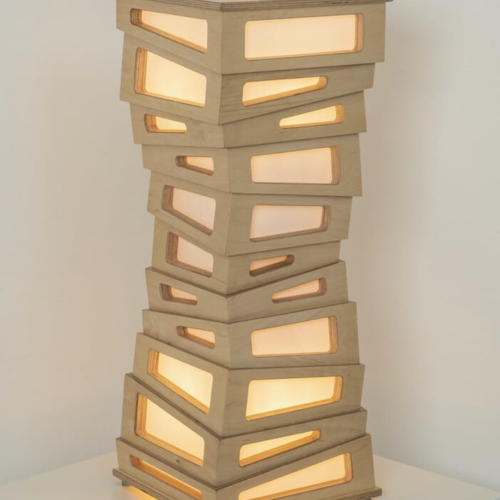
Ashoke Chhabra
Chaos Hourglass Table Lamp, 2024
Baltic birch plywood, acrylic
11 x 11 x 25 inches
This artwork is featured in Renewal: WEM's 31st Annual Juried Woodworking Exhibition on view through September 7, 2025.
The twenty-five artists featured in this exhibition each approach renewal from a unique perspective, yet they share an interest in exploring its many manifestations through wood, whether focusing on its material properties, historical resonance, inherent narratives, or metaphorical potential.
*Shipping of artworks from the Juried Woodworking Exhibition will be arranged by the artist. Please enter the coupon code juried31 at checkout to receive free shipping on these items.
*Member discount cannot be applied to artworks in the Juried Woodworking Exhibition.
-
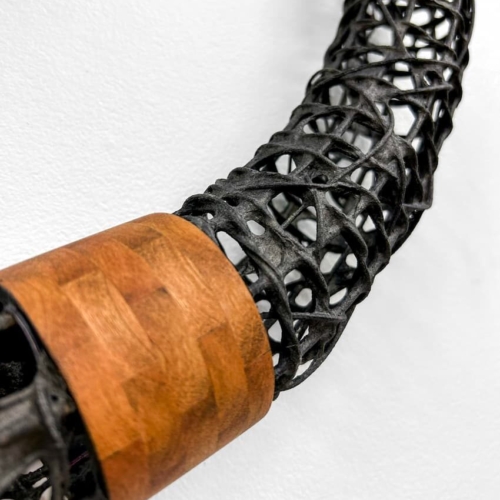
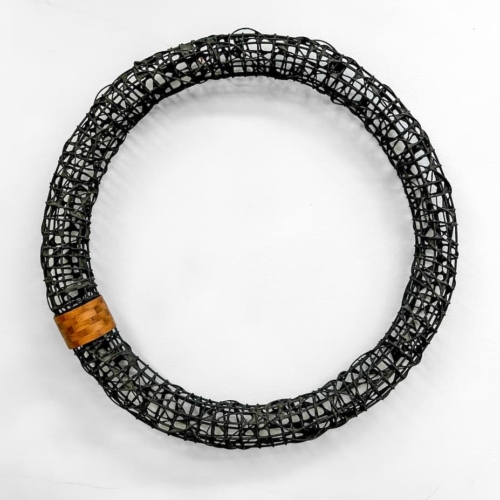 Teresa Audet Circumference VI, 2023 Cherry, dyed reed, flax and abaca paper pulp 32 x 32 x 4 inches This artwork is featured in Renewal: WEM's 31st Annual Juried Woodworking Exhibition on view through September 7, 2025. The twenty-five artists featured in this exhibition each approach renewal from a unique perspective, yet they share an interest in exploring its many manifestations through wood, whether focusing on its material properties, historical resonance, inherent narratives, or metaphorical potential. *Shipping of artworks from the Juried Woodworking Exhibition will be arranged by the artist. Please enter the coupon code juried31 at checkout to receive free shipping on these items. *Member discount cannot be applied to artworks in the Juried Woodworking Exhibition.
Teresa Audet Circumference VI, 2023 Cherry, dyed reed, flax and abaca paper pulp 32 x 32 x 4 inches This artwork is featured in Renewal: WEM's 31st Annual Juried Woodworking Exhibition on view through September 7, 2025. The twenty-five artists featured in this exhibition each approach renewal from a unique perspective, yet they share an interest in exploring its many manifestations through wood, whether focusing on its material properties, historical resonance, inherent narratives, or metaphorical potential. *Shipping of artworks from the Juried Woodworking Exhibition will be arranged by the artist. Please enter the coupon code juried31 at checkout to receive free shipping on these items. *Member discount cannot be applied to artworks in the Juried Woodworking Exhibition. -
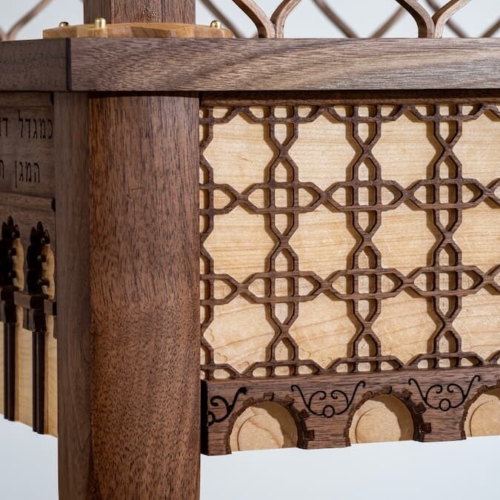
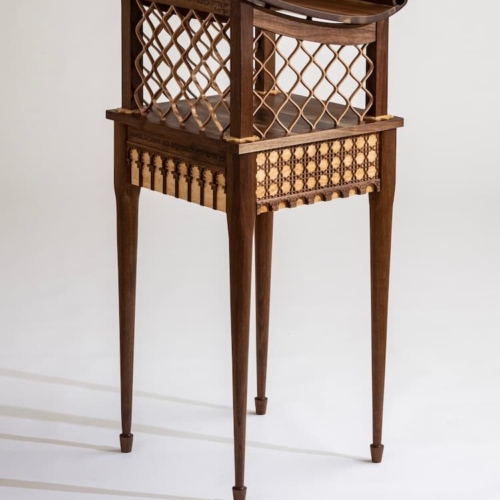 Dotan Appelbaum Abulafia Lectern, 2021 Walnut, maple, maple veneer, brass 20 x 20 x 40 inches This artwork is featured in Renewal: WEM's 31st Annual Juried Woodworking Exhibition on view through September 7, 2025. The twenty-five artists featured in this exhibition each approach renewal from a unique perspective, yet they share an interest in exploring its many manifestations through wood, whether focusing on its material properties, historical resonance, inherent narratives, or metaphorical potential. *Shipping of artworks from the Juried Woodworking Exhibition will be arranged by the artist. Please enter the coupon code juried31 at checkout to receive free shipping on these items. *Member discount cannot be applied to artworks in the Juried Woodworking Exhibition.
Dotan Appelbaum Abulafia Lectern, 2021 Walnut, maple, maple veneer, brass 20 x 20 x 40 inches This artwork is featured in Renewal: WEM's 31st Annual Juried Woodworking Exhibition on view through September 7, 2025. The twenty-five artists featured in this exhibition each approach renewal from a unique perspective, yet they share an interest in exploring its many manifestations through wood, whether focusing on its material properties, historical resonance, inherent narratives, or metaphorical potential. *Shipping of artworks from the Juried Woodworking Exhibition will be arranged by the artist. Please enter the coupon code juried31 at checkout to receive free shipping on these items. *Member discount cannot be applied to artworks in the Juried Woodworking Exhibition. -
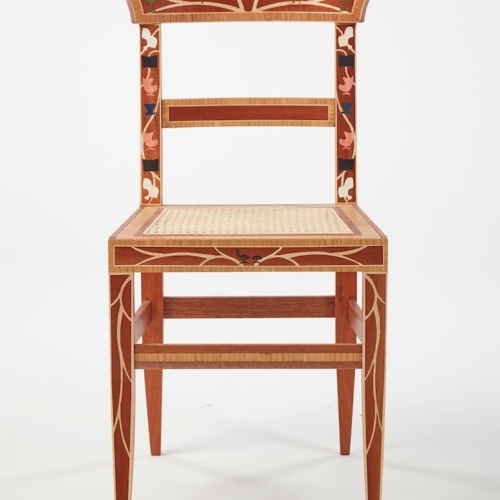
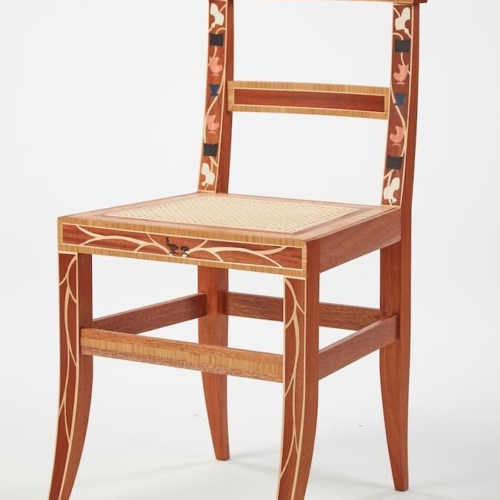 Dotan Appelbaum Chairs, 2023 African mahogany, wood veneers, cane 17 x 16 x 30 inches This artwork is featured in Renewal: WEM's 31st Annual Juried Woodworking Exhibition on view through September 7, 2025. The twenty-five artists featured in this exhibition each approach renewal from a unique perspective, yet they share an interest in exploring its many manifestations through wood, whether focusing on its material properties, historical resonance, inherent narratives, or metaphorical potential. *Shipping of artworks from the Juried Woodworking Exhibition will be arranged by the artist. Please enter the coupon code juried31 at checkout to receive free shipping on these items. *Member discount cannot be applied to artworks in the Juried Woodworking Exhibition.
Dotan Appelbaum Chairs, 2023 African mahogany, wood veneers, cane 17 x 16 x 30 inches This artwork is featured in Renewal: WEM's 31st Annual Juried Woodworking Exhibition on view through September 7, 2025. The twenty-five artists featured in this exhibition each approach renewal from a unique perspective, yet they share an interest in exploring its many manifestations through wood, whether focusing on its material properties, historical resonance, inherent narratives, or metaphorical potential. *Shipping of artworks from the Juried Woodworking Exhibition will be arranged by the artist. Please enter the coupon code juried31 at checkout to receive free shipping on these items. *Member discount cannot be applied to artworks in the Juried Woodworking Exhibition. -
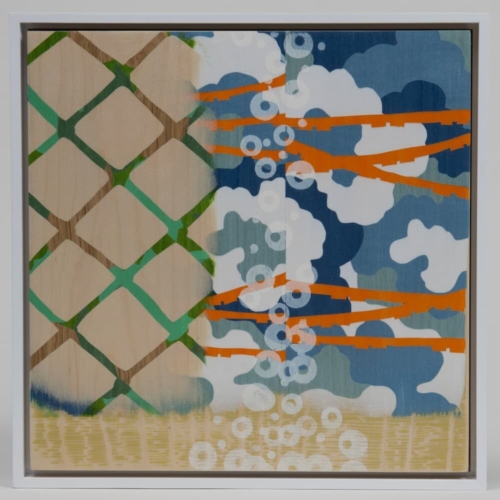 Sara Tabbert Passing Through, 2024 Wood veneer, printmaking ink, wood filler on carved cradled panel 12 x 12 inches This artwork is featured in Renewal: WEM's 31st Annual Juried Woodworking Exhibition on view through September 7, 2025. The twenty-five artists featured in this exhibition each approach renewal from a unique perspective, yet they share an interest in exploring its many manifestations through wood, whether focusing on its material properties, historical resonance, inherent narratives, or metaphorical potential. *Shipping of artworks from the Juried Woodworking Exhibition will be arranged by the artist. Please enter the coupon code juried31 at checkout to receive free shipping on these items. *Member discount cannot be applied to artworks in the Juried Woodworking Exhibition.
Sara Tabbert Passing Through, 2024 Wood veneer, printmaking ink, wood filler on carved cradled panel 12 x 12 inches This artwork is featured in Renewal: WEM's 31st Annual Juried Woodworking Exhibition on view through September 7, 2025. The twenty-five artists featured in this exhibition each approach renewal from a unique perspective, yet they share an interest in exploring its many manifestations through wood, whether focusing on its material properties, historical resonance, inherent narratives, or metaphorical potential. *Shipping of artworks from the Juried Woodworking Exhibition will be arranged by the artist. Please enter the coupon code juried31 at checkout to receive free shipping on these items. *Member discount cannot be applied to artworks in the Juried Woodworking Exhibition. -
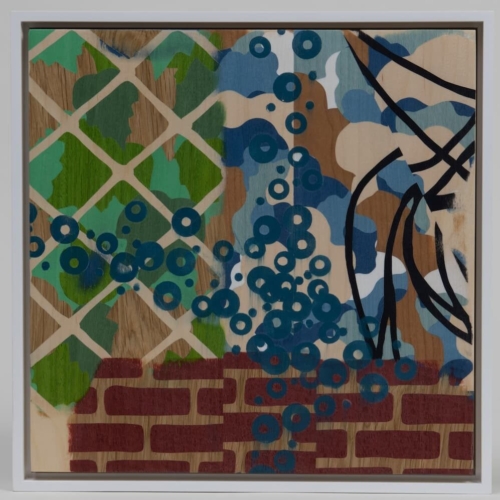 Sara Tabbert Intersection, 2024 Wood veneer, printmaking ink on cradled panel 12 x 12 inches This artwork is featured in Renewal: WEM's 31st Annual Juried Woodworking Exhibition on view through September 7, 2025. The twenty-five artists featured in this exhibition each approach renewal from a unique perspective, yet they share an interest in exploring its many manifestations through wood, whether focusing on its material properties, historical resonance, inherent narratives, or metaphorical potential. *Shipping of artworks from the Juried Woodworking Exhibition will be arranged by the artist. Please enter the coupon code juried31 at checkout to receive free shipping on these items. *Member discount cannot be applied to artworks in the Juried Woodworking Exhibition.
Sara Tabbert Intersection, 2024 Wood veneer, printmaking ink on cradled panel 12 x 12 inches This artwork is featured in Renewal: WEM's 31st Annual Juried Woodworking Exhibition on view through September 7, 2025. The twenty-five artists featured in this exhibition each approach renewal from a unique perspective, yet they share an interest in exploring its many manifestations through wood, whether focusing on its material properties, historical resonance, inherent narratives, or metaphorical potential. *Shipping of artworks from the Juried Woodworking Exhibition will be arranged by the artist. Please enter the coupon code juried31 at checkout to receive free shipping on these items. *Member discount cannot be applied to artworks in the Juried Woodworking Exhibition. -
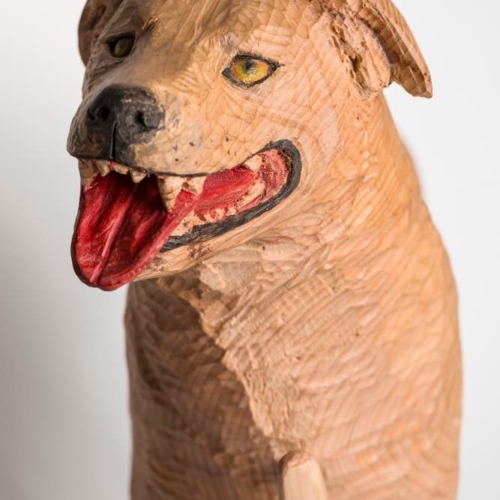
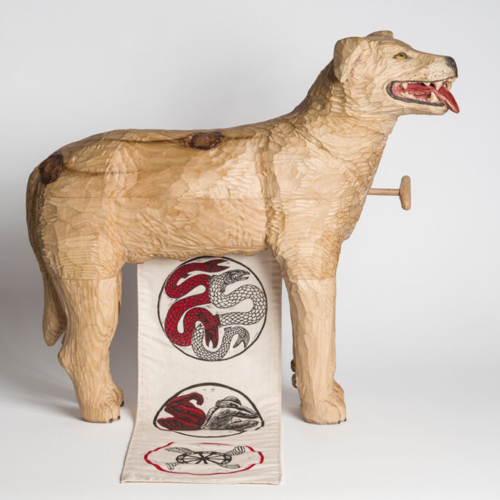 Eva Sturm-Gross D-g Days, 2023 Carved wood, relief printing on fabric 24 x 5 x 12 inches This artwork is featured in Renewal: WEM's 31st Annual Juried Woodworking Exhibition on view through September 7, 2025. The twenty-five artists featured in this exhibition each approach renewal from a unique perspective, yet they share an interest in exploring its many manifestations through wood, whether focusing on its material properties, historical resonance, inherent narratives, or metaphorical potential. *Shipping of artworks from the Juried Woodworking Exhibition will be arranged by the artist. Please enter the coupon code juried31 at checkout to receive free shipping on these items. *Member discount cannot be applied to artworks in the Juried Woodworking Exhibition.
Eva Sturm-Gross D-g Days, 2023 Carved wood, relief printing on fabric 24 x 5 x 12 inches This artwork is featured in Renewal: WEM's 31st Annual Juried Woodworking Exhibition on view through September 7, 2025. The twenty-five artists featured in this exhibition each approach renewal from a unique perspective, yet they share an interest in exploring its many manifestations through wood, whether focusing on its material properties, historical resonance, inherent narratives, or metaphorical potential. *Shipping of artworks from the Juried Woodworking Exhibition will be arranged by the artist. Please enter the coupon code juried31 at checkout to receive free shipping on these items. *Member discount cannot be applied to artworks in the Juried Woodworking Exhibition. -

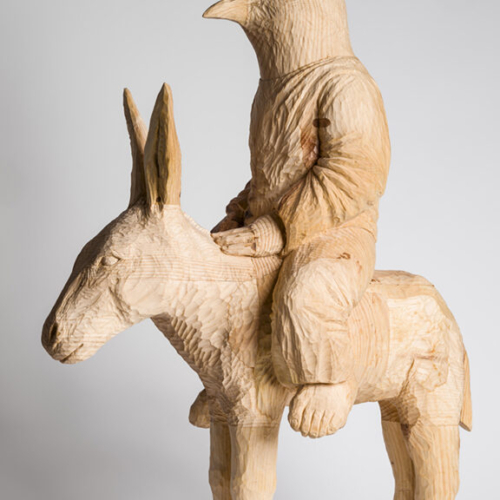 Eva Sturm-Gross The Ass, 2024 Carved wood 24 x 6 x 30 inches This artwork is featured in Renewal: WEM's 31st Annual Juried Woodworking Exhibition on view through September 7, 2025. The twenty-five artists featured in this exhibition each approach renewal from a unique perspective, yet they share an interest in exploring its many manifestations through wood, whether focusing on its material properties, historical resonance, inherent narratives, or metaphorical potential. *Shipping of artworks from the Juried Woodworking Exhibition will be arranged by the artist. Please enter the coupon code juried31 at checkout to receive free shipping on these items. *Member discount cannot be applied to artworks in the Juried Woodworking Exhibition.
Eva Sturm-Gross The Ass, 2024 Carved wood 24 x 6 x 30 inches This artwork is featured in Renewal: WEM's 31st Annual Juried Woodworking Exhibition on view through September 7, 2025. The twenty-five artists featured in this exhibition each approach renewal from a unique perspective, yet they share an interest in exploring its many manifestations through wood, whether focusing on its material properties, historical resonance, inherent narratives, or metaphorical potential. *Shipping of artworks from the Juried Woodworking Exhibition will be arranged by the artist. Please enter the coupon code juried31 at checkout to receive free shipping on these items. *Member discount cannot be applied to artworks in the Juried Woodworking Exhibition. -
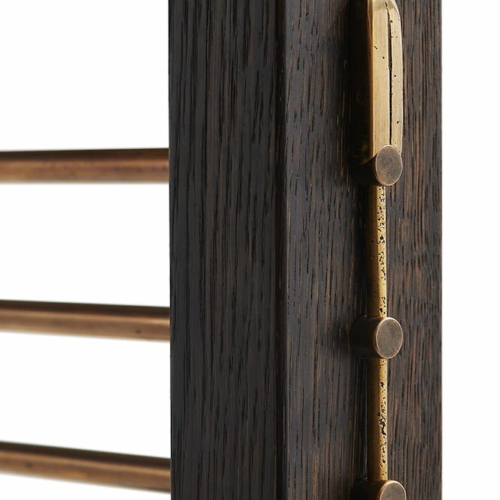
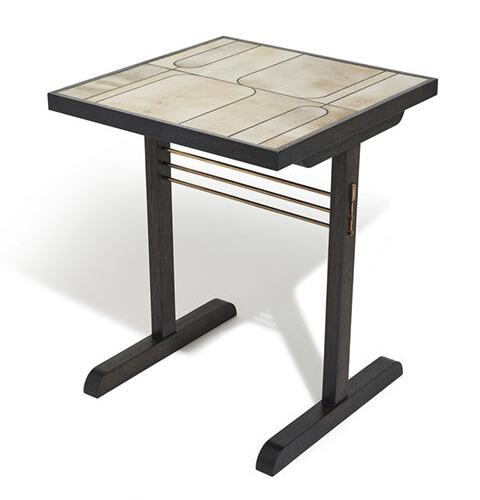 Ellen Sigunik Bistro Trestle Table, 2024 Ebonized oak, goatskin parchment, aged brass inlay, raw sand-cast brass 24 5/8 x 24 5/8 x 30 1/4 inches This artwork is featured in Renewal: WEM's 31st Annual Juried Woodworking Exhibition on view through September 7, 2025. The twenty-five artists featured in this exhibition each approach renewal from a unique perspective, yet they share an interest in exploring its many manifestations through wood, whether focusing on its material properties, historical resonance, inherent narratives, or metaphorical potential. *Shipping of artworks from the Juried Woodworking Exhibition will be arranged by the artist. Please enter the coupon code juried31 at checkout to receive free shipping on these items. *Member discount cannot be applied to artworks in the Juried Woodworking Exhibition.
Ellen Sigunik Bistro Trestle Table, 2024 Ebonized oak, goatskin parchment, aged brass inlay, raw sand-cast brass 24 5/8 x 24 5/8 x 30 1/4 inches This artwork is featured in Renewal: WEM's 31st Annual Juried Woodworking Exhibition on view through September 7, 2025. The twenty-five artists featured in this exhibition each approach renewal from a unique perspective, yet they share an interest in exploring its many manifestations through wood, whether focusing on its material properties, historical resonance, inherent narratives, or metaphorical potential. *Shipping of artworks from the Juried Woodworking Exhibition will be arranged by the artist. Please enter the coupon code juried31 at checkout to receive free shipping on these items. *Member discount cannot be applied to artworks in the Juried Woodworking Exhibition. -
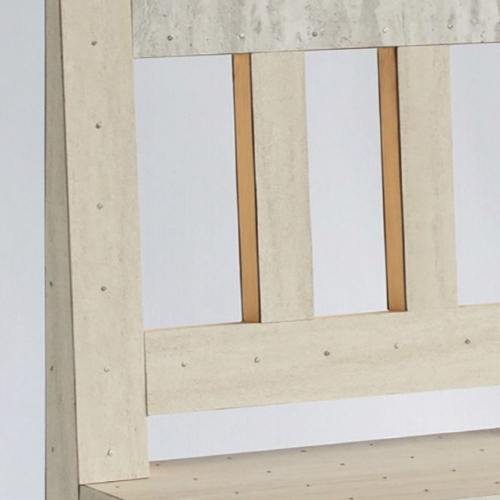
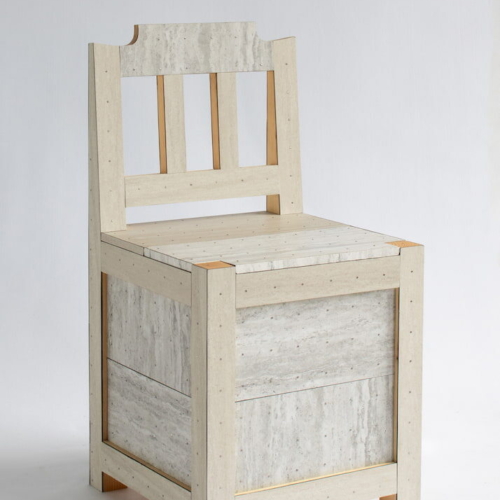 Cameron Lasson Replica of an 18th Century Folk Chair in Stone, 2024 Pine, vinyl stone flooring tiles, nails, stones 15 x 15 x 30 inches This artwork is featured in Renewal: WEM's 31st Annual Juried Woodworking Exhibition on view through September 7, 2025. The twenty-five artists featured in this exhibition each approach renewal from a unique perspective, yet they share an interest in exploring its many manifestations through wood, whether focusing on its material properties, historical resonance, inherent narratives, or metaphorical potential. *Shipping of artworks from the Juried Woodworking Exhibition will be arranged by the artist. Please enter the coupon code juried31 at checkout to receive free shipping on these items. *Member discount cannot be applied to artworks in the Juried Woodworking Exhibition.
Cameron Lasson Replica of an 18th Century Folk Chair in Stone, 2024 Pine, vinyl stone flooring tiles, nails, stones 15 x 15 x 30 inches This artwork is featured in Renewal: WEM's 31st Annual Juried Woodworking Exhibition on view through September 7, 2025. The twenty-five artists featured in this exhibition each approach renewal from a unique perspective, yet they share an interest in exploring its many manifestations through wood, whether focusing on its material properties, historical resonance, inherent narratives, or metaphorical potential. *Shipping of artworks from the Juried Woodworking Exhibition will be arranged by the artist. Please enter the coupon code juried31 at checkout to receive free shipping on these items. *Member discount cannot be applied to artworks in the Juried Woodworking Exhibition. -
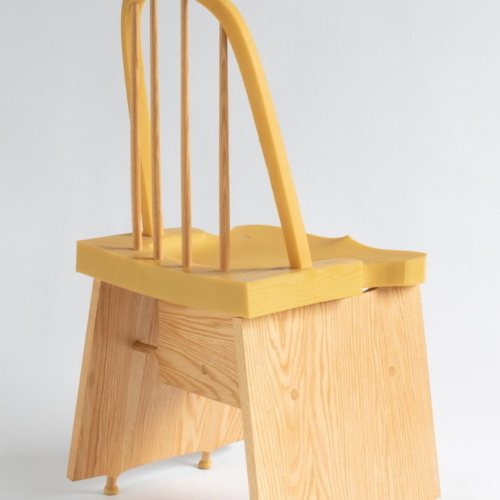
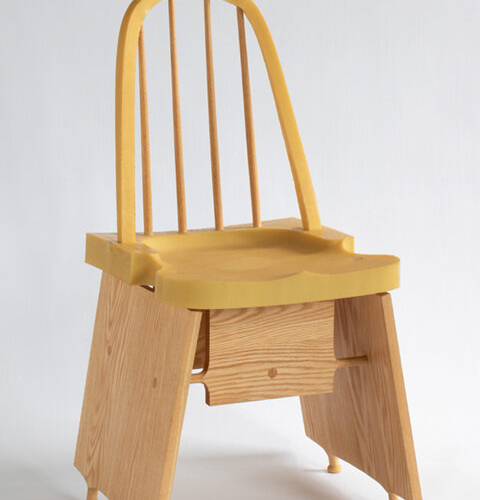
Cameron Lasson
Bow Back Windsor Chair, 2024
Oak, rubber cast in oak
18 x 18 x 35 inches
This artwork is featured in Renewal: WEM's 31st Annual Juried Woodworking Exhibition on view through September 7, 2025.
The twenty-five artists featured in this exhibition each approach renewal from a unique perspective, yet they share an interest in exploring its many manifestations through wood, whether focusing on its material properties, historical resonance, inherent narratives, or metaphorical potential.
*Shipping of artworks from the Juried Woodworking Exhibition will be arranged by the artist. Please enter the coupon code juried31 at checkout to receive free shipping on these items.
*Member discount cannot be applied to artworks in the Juried Woodworking Exhibition.
-

 Cameron Lasson Taxidermy Tree, 2023 Birch bark, birch heartwood, birch plywood 18 x 18 x 35 inches This artwork is featured in Renewal: WEM's 31st Annual Juried Woodworking Exhibition on view through September 7, 2025. The twenty-five artists featured in this exhibition each approach renewal from a unique perspective, yet they share an interest in exploring its many manifestations through wood, whether focusing on its material properties, historical resonance, inherent narratives, or metaphorical potential. *Shipping of artworks from the Juried Woodworking Exhibition will be arranged by the artist. Please enter the coupon code juried31 at checkout to receive free shipping on these items. *Member discount cannot be applied to artworks in the Juried Woodworking Exhibition.
Cameron Lasson Taxidermy Tree, 2023 Birch bark, birch heartwood, birch plywood 18 x 18 x 35 inches This artwork is featured in Renewal: WEM's 31st Annual Juried Woodworking Exhibition on view through September 7, 2025. The twenty-five artists featured in this exhibition each approach renewal from a unique perspective, yet they share an interest in exploring its many manifestations through wood, whether focusing on its material properties, historical resonance, inherent narratives, or metaphorical potential. *Shipping of artworks from the Juried Woodworking Exhibition will be arranged by the artist. Please enter the coupon code juried31 at checkout to receive free shipping on these items. *Member discount cannot be applied to artworks in the Juried Woodworking Exhibition. -
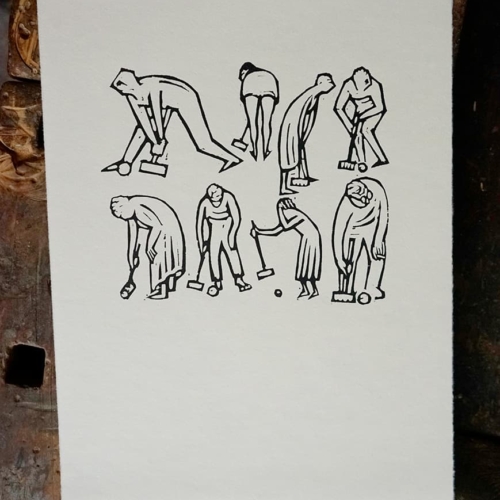
 This print was struck from Wharton Esherick’s original woodblock and printed by letterpress on Torinoko paper. The paper quality, size, and printing technique used to make these prints were thoughtfully chosen from close examination of Esherick’s original prints in the Wharton Esherick Museum collection. This limited series of 25 prints were struck by Katie Garth, a Philadelphia-based print artist and educator. Learn more about her work at katiegarth.com. From an edition of 25 printed in 2024. Comes unmatted and unframed. *Please note that these prints are struck from Esherick’s woodblocks and reflect his original marks.*
This print was struck from Wharton Esherick’s original woodblock and printed by letterpress on Torinoko paper. The paper quality, size, and printing technique used to make these prints were thoughtfully chosen from close examination of Esherick’s original prints in the Wharton Esherick Museum collection. This limited series of 25 prints were struck by Katie Garth, a Philadelphia-based print artist and educator. Learn more about her work at katiegarth.com. From an edition of 25 printed in 2024. Comes unmatted and unframed. *Please note that these prints are struck from Esherick’s woodblocks and reflect his original marks.* -
Out of stock
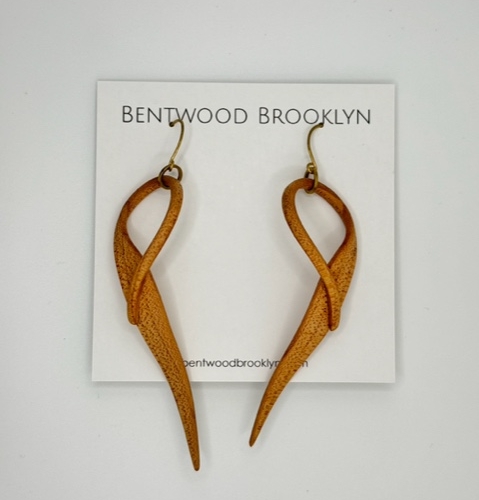 Handmade Bentwood Earrings - Hard Maple / Brass
Handmade Bentwood Earrings - Hard Maple / Brass -
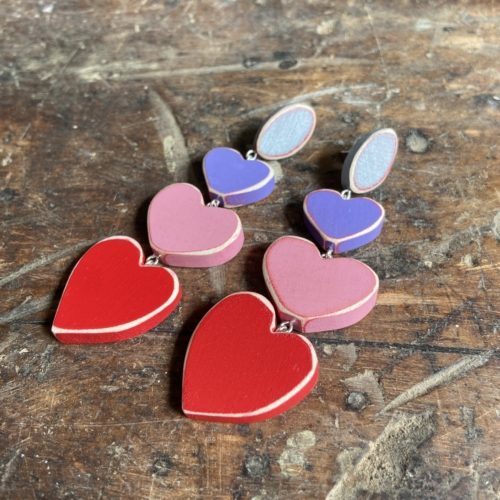
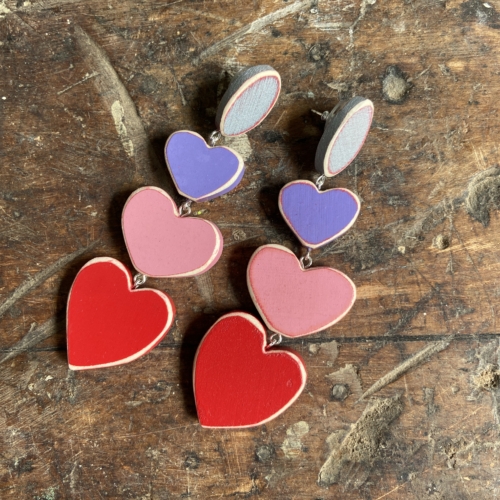 Earrings from Morgan Hill’s ‘Bad Habits’ series. https://www.morganhillcreative.com/
Earrings from Morgan Hill’s ‘Bad Habits’ series. https://www.morganhillcreative.com/ -
Out of stock
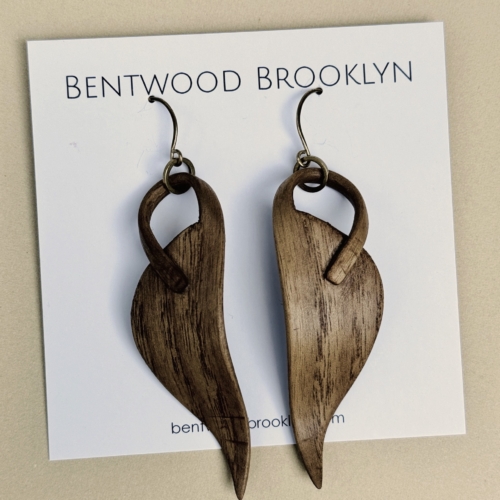 Handmade Bentwood Earrings - Sassafras / Brass
Handmade Bentwood Earrings - Sassafras / Brass

